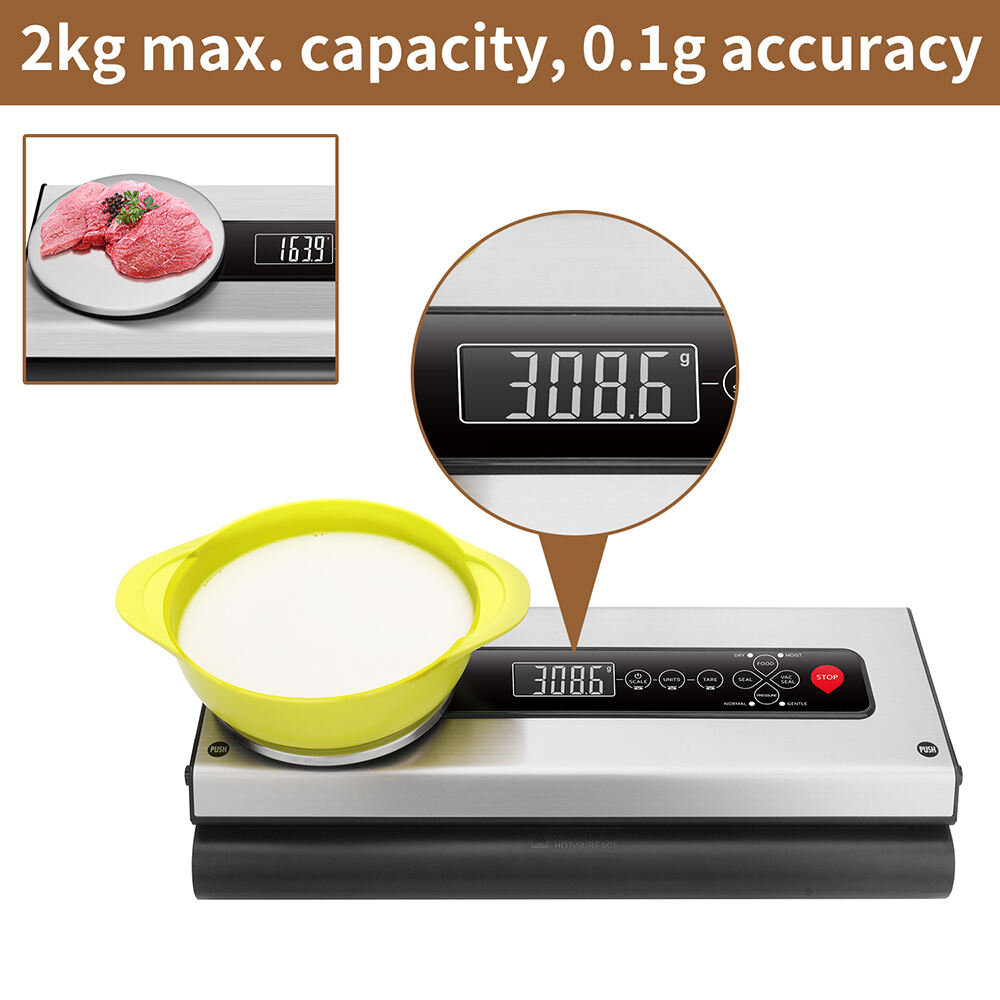Modern kitchen technology has revolutionized the way we preserve food, and the food vacuum sealer machine stands at the forefront of this innovation. This remarkable appliance has transformed home food storage, offering a professional-grade solution to keep groceries fresh for extended periods. By removing air and creating an impenetrable barrier, vacuum sealers fundamentally change how we approach food storage and preservation in our homes.
When you invest in a food vacuum sealer machine, you're not just buying another kitchen appliance – you're adopting a comprehensive food preservation system that can significantly reduce food waste and save money over time. The technology behind these devices is sophisticated yet straightforward, making them an invaluable tool for both casual home cooks and culinary enthusiasts.
A food vacuum sealer machine operates through a precise mechanical process. The device creates a powerful suction that removes oxygen and other gases from specially designed bags or containers. This process eliminates the primary catalysts for food spoilage – air and moisture. The machine then applies heat to create an airtight seal, effectively locking freshness inside while keeping deteriorating elements out.
The removal of air serves multiple purposes. First, it eliminates the environment needed for bacteria and mold growth. Second, it prevents oxidation, which causes foods to change color, texture, and flavor. The sealed environment also protects against freezer burn, making vacuum-sealed foods ideal for long-term freezer storage.
Modern food vacuum sealer machines come equipped with sophisticated features that enhance their effectiveness. Moisture detection sensors can adjust suction power for different food types, while adjustable seal settings ensure optimal results for both dry and moist foods. Some models even include pulse vacuum functions for delicate items and marinate modes that can infuse flavors in minutes rather than hours.
The latest models incorporate smart technology, allowing users to monitor sealing progress through mobile apps and receive maintenance alerts. These advanced features make the preservation process more efficient and reliable, ensuring consistent results every time.

When it comes to fruits and vegetables, a food vacuum sealer machine can extend shelf life by up to five times compared to conventional storage methods. Leafy greens remain crisp and vibrant, while cut vegetables maintain their nutritional value and texture. The vacuum environment slows down the ripening process, preventing premature spoilage and maintaining peak freshness.
For delicate produce, many vacuum sealers offer gentle sealing options that prevent crushing while still providing effective preservation. This versatility makes it possible to store everything from hardy root vegetables to tender berries successfully.
Proteins benefit tremendously from vacuum sealing. Fresh meat can last up to six months in the refrigerator and up to three years in the freezer when properly vacuum sealed. The absence of air prevents freezer burn and oxidation, ensuring that meats retain their original flavor, color, and texture even after extended storage periods.
Fish and seafood, which are particularly susceptible to spoilage, can maintain their fresh-caught quality when vacuum sealed. The process locks in natural moisture while preventing the absorption of freezer odors, resulting in superior taste and texture upon thawing.
A food vacuum sealer machine doesn't just preserve food – it transforms how you organize your storage spaces. Vacuum-sealed packages take up significantly less space than traditional storage containers or bags, allowing you to maximize refrigerator and freezer capacity. The compact, flat packages can be easily stacked and organized, making inventory management simpler and more efficient.
The space-saving aspect becomes particularly valuable when bulk-buying seasonal produce or taking advantage of sales. You can purchase larger quantities knowing you have an effective means of preserving and storing the excess without cramming your storage spaces.
Vacuum-sealed packages can be clearly labeled with contents and dates, creating an organized system for rotating food stocks. This visibility helps prevent food waste by making it easy to track what needs to be used first. Many vacuum sealer bags are also transparent, allowing for quick visual identification of contents without opening packages.
Creating a well-organized storage system with vacuum-sealed foods can streamline meal planning and preparation. You can portion ingredients in advance, making it simple to grab exactly what you need when cooking.
While a food vacuum sealer machine represents an initial investment, the long-term financial benefits are substantial. By extending food shelf life, you can significantly reduce waste from spoilage. This allows you to buy in bulk when prices are favorable and preserve seasonal produce for use throughout the year.
The ability to portion and preserve leftovers effectively also contributes to cost savings. Instead of throwing away excess food, you can vacuum seal it for future meals, ensuring nothing goes to waste. Over time, these savings can far exceed the initial cost of the machine.
Reducing food waste through vacuum sealing has significant environmental benefits. Less wasted food means fewer resources consumed in food production and transportation. Additionally, many vacuum sealer bags are reusable or recyclable, further reducing environmental impact.
The energy efficiency of storing vacuum-sealed foods also contributes to sustainability. Since sealed packages take up less space, your refrigerator and freezer operate more efficiently, consuming less energy to maintain proper temperatures.
Vacuum-sealed foods can last significantly longer than traditionally stored items. Dry goods can last 3-5 times longer, refrigerated items can extend 2-4 weeks beyond normal shelf life, and frozen foods can maintain quality for up to 3 years, depending on the type of food and storage conditions.
While most foods can be vacuum sealed, some require special consideration. Soft fruits and vegetables may need to be frozen first to maintain structure. Some foods that produce gases, like fresh mushrooms and garlic, may need modified storage techniques. Always follow manufacturer guidelines for specific food types.
Regular maintenance of a food vacuum sealer machine is relatively simple. Clean the sealing strip after each use, check and replace seals when needed, and ensure the vacuum chamber is free from debris. Most models indicate when maintenance is required, and many parts are easily replaceable to extend the machine's life.